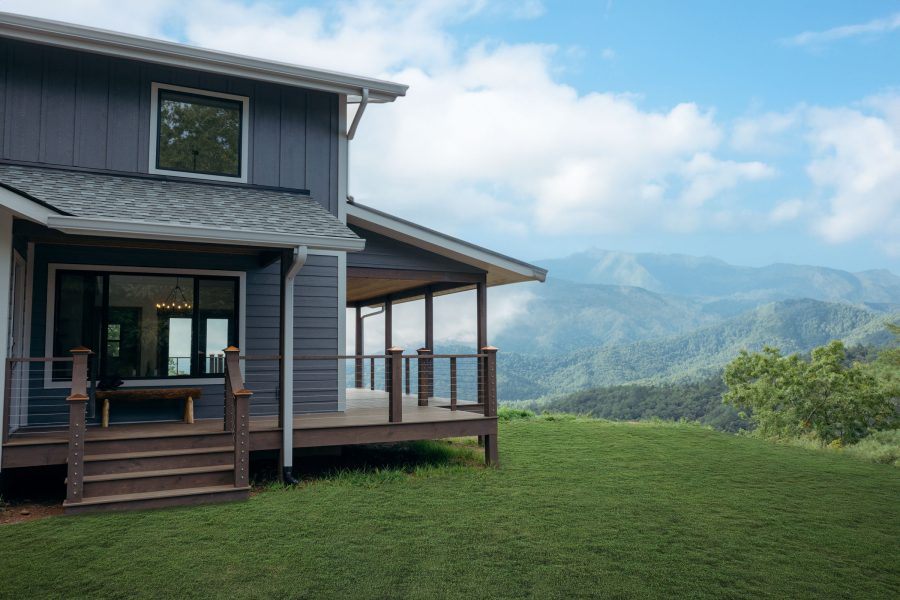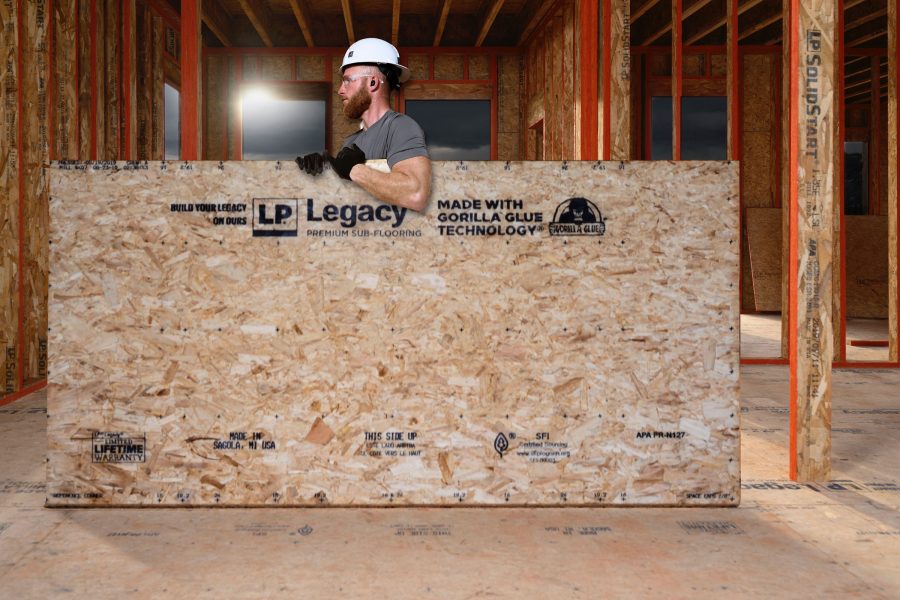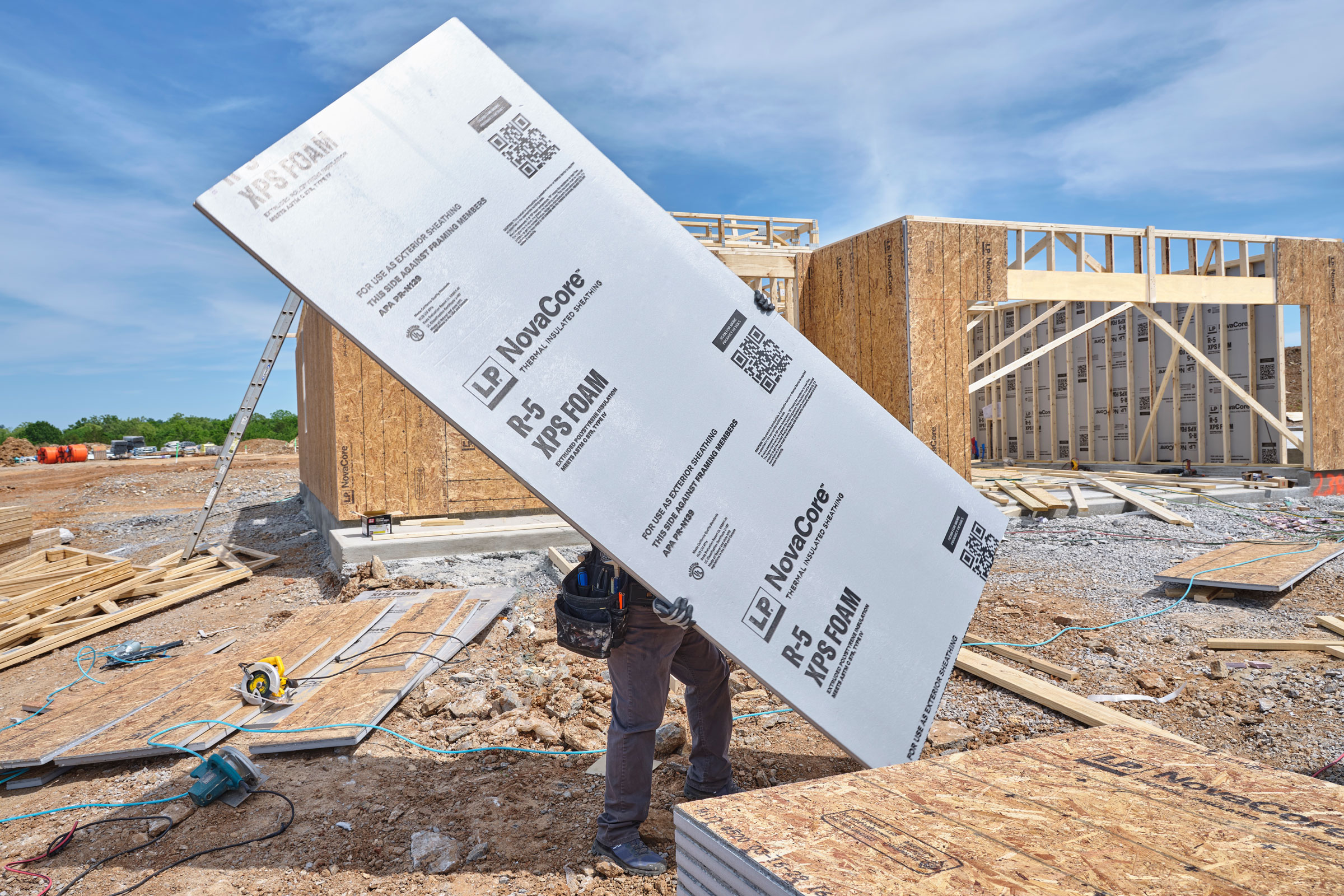Story at a glance:
- The LP Structural Solutions portfolio is now almost entirely carbon negative, proving sustainable building products can actively reverse climate impact.
- Architects like Perkins Eastman are using high-performance materials and strategies to drive resilience, durability, and smarter energy outcomes.
- Experts are debunking the myth that green building costs more by showing how durable, low-carbon materials can lower operating costs and meet evolving codes.
A growing number of architects and designers are no longer satisfied with incremental improvements to sustainability; they’re demanding a shift toward climate-positive outcomes. As carbon becomes a design parameter and regulatory pressure mounts, materials are expected to do more than meet performance standards—they’re being asked to reverse carbon footprints.
At the forefront of this transition is LP Building Solutions (LP), a leading manufacturer of high-performance engineered wood products designed to meet today’s structural, environmental, and design standards.
Guided by a strategy where sustainability isn’t a sidebar but the blueprint, LP has achieved a remarkable milestone—nearly its entire Structural Solutions portfolio has been independently verified as carbon negative, meaning these products store more carbon over their life cycle than they emit. From moisture-resistant barriers and radiant sheathing to durable subflooring, these everyday building components are rewriting the narrative.
In pursuit of that aim, LP’s carbon-negative line isn’t just a portfolio; it’s a marker of where the industry is heading. With full life cycle assessments, renewable sourcing, and transparent manufacturing practices, LP is helping turn carbon negativity from ambition into reality—just as sustainable materials shift from novelty to necessity.
“By utilizing naturally regenerative resources and stringently sourced wood fiber, we’re able to develop solutions that not only reduce environmental impact but also contribute to green building standards,” says Sarah Caperton, director of innovation and commercialization at LP. “Today we measure carbon negativity across the full life cycle—from sourcing to end-of-life—ensuring our claims are grounded in data and verified by third parties.”

LP SmartSide products are verified carbon negative, meaning they store more carbon than the total greenhouse gas emissions released throughout their life cycle. Photo courtesy of LP Building Solutions
Caperton says sustainability is more than just a goal at LP; it’s a functional design requirement. “We define sustainability as creating products that are resource-efficient, high-performing, and built to meet the long-term needs of the building industry. That means lowering environmental impact, reducing waste, and ensuring durability throughout a product’s life cycle.”
This perspective drives LP’s innovation strategy. Whether introducing a new product or refining manufacturing processes, every decision is guided by data-driven metrics—carbon footprint, material efficiency, and forest certification compliance among them. The result is a continuous feedback loop where sustainability shapes how products are made and evolve.
That ethos comes to life in the LP Structural Solutions portfolio, which includes LP WeatherLogic, LP TechShield, LP Legacy, LP FlameBlock, and the company’s latest innovation, LP NovaCore.
Each product supports key performance pillars like moisture resistance, energy efficiency, fire protection, and structural strength while also reducing environmental impact through stringently sourced fiber and carbon-negative materials. “From code compliance to material science, we’re committed to delivering solutions that perform under pressure and help project teams meet green building standards like LEED, NGBS, and regional energy and resilience codes,” Caperton says.
Keeping Pace

Photo courtesy of LP Building Solutions
As for balancing environmental stewardship with profitability and scalability, Caperton views sustainability not as a trade-off but as a competitive advantage. “Our long-term strategy focuses on scaling sustainable solutions through responsible sourcing, product innovation, and investments in cleaner operations, while delivering value to our shareholders, customers, and the planet.”
Transparency remains a cornerstone of that strategy. LP supports its environmental claims with third-party certifications like the Sustainable Forestry Initiative and life cycle assessments that evaluate impact across every stage of a product’s life.
In 2024 the company published Environmental Product Declarations (EPDs) for products representing 91% of its North American net sales—all verified as carbon negative by ASTM International. These science-based disclosures provide a clear view of LP’s impact and reinforce its commitment to continuous improvement. The company’s annual sustainability report further tracks progress on environmental and social goals.
“As more builders and developers prioritize climate-conscious practices, conversations around carbon, resilience, and energy performance are shifting from theoretical to actionable,” Caperton says. “Sustainability is no longer seen as a bonus; it’s a baseline expectation.”
She says there’s also growing demand for materials that align with environmental goals while improving durability and lowering operational costs. “Especially in regions vulnerable to extreme weather or wildfires, resilience has become essential.”
And the shift isn’t just market-driven. “As codes change and new building standards take hold, manufacturers face increasing pressure to deliver high-performance materials that meet both sustainability and resilience benchmarks. LP is leaning into this moment with solutions designed to keep pace with rising expectations.”
Less is More

Graphic by Michael Esposito
As manufacturers like LP push sustainable material innovation forward, architects are also adapting their design approaches—especially when it comes to resilience. Juan Guarin, senior associate and sustainability specialist at Perkins Eastman, sees material selection as one of the most powerful tools for climate-responsive design. “The industry is advancing forward,” he says. “Today we not only have better modeling tools but also materials that meet both environmental and durability standards.”
In regions like the Atlantic Northeast, controlling air infiltration is key to energy performance. “If you can manage air movement through the envelope, you dramatically improve efficiency,” Guarin says. “That means going beyond code with solutions like fluid-applied weather barriers and advanced insulation systems that seal tight corners and complex transitions.”
The industry evolves. If you’re not willing to evolve with it, you’re going to be left behind.
Durability is also essential. “Five or 10 years ago you had to choose between sustainability and performance,” he says. “Now resilient flooring, insulation, and structural materials can deliver both—with 20- to 30-year warranties.”
But one of the most overlooked advancements, he says, is reduction. “The best material is the one you don’t install. Whether that means exposing structural slabs or skipping unnecessary ceiling finishes, using less is one of the most sustainable moves you can make.”
Clear Path Forward
For Guarin, persistent misconceptions remain one of the biggest hurdles to broader adoption of sustainable materials. “There’s still this assumption that green buildings are boring, expensive, or less durable, and it’s simply not true,” he says.
One of the most common myths is cost. “We hear that a lot, but there are passive strategies—like solar orientation or smart massing—that cost nothing,” he says. “And when sustainable features do add cost, we often shift budgets elsewhere.”
At Boston Arts Academy, for instance, upgrading to triple-pane windows enabled the Perkins Eastman team to eliminate perimeter heating and downsize mechanical systems, ultimately saving more than the envelope investment.
Another outdated belief is that sustainable materials don’t last. “We’ve specified PVC-free flooring with 40-year warranties and still face skepticism,” Guarin says. “But when you vet the products properly, it’s clear which ones are built to last—without harmful tradeoffs.”
He points to one final fallacy—the mindset that tradition equals best practice. “The industry evolves,” he says. “If you’re not willing to evolve with it, you’re going to be left behind.”
Similar misconceptions show up on the manufacturing side, too, Caperton says—particularly the idea that carbon-negative or wood-based materials are too costly or incompatible with long-term climate goals.
“In reality wood, when responsibly and thoughtfully sourced, can be one of the most renewable and climate-positive materials available,” she says. LP uses fiber from naturally regenerative species like Southern Yellow Pine and Trembling Aspen, harvested under strict environmental standards and supported by rigorous external verification. “We continue to demonstrate that sustainability and strength can coexist, and that builders don’t have to sacrifice durability or budget to make responsible choices.”

Photo courtesy of LP Building Solutions
Echoing Guarin, the bigger challenge, Caperton adds, is mindset. “The industry often assumes sustainability means higher costs, yet many durable, low-maintenance materials can actually reduce total cost of ownership.”
Sustainability and cost efficiency are not mutually exclusive, she says. “Our products offer an immediate way to reduce carbon, improve performance, and meet evolving environmental and regulatory demands. LP isn’t just solving for today; it’s building for what’s next.”
One exciting project currently underway for LP is a net-zero community in North Carolina where LP SmartSide Trim & Siding is being used as part of a broader carbon-conscious construction approach. “This development highlights how durable, low-maintenance siding can play a role in reducing a home’s overall environmental footprint,” Caperton says. “We’re also proud to be a Home Depot Eco Actions Partner—further evidence of our role in helping consumers and pros access more sustainable product options.”
As the built environment faces mounting climate pressures, Caperton sees a clear path forward. The company’s vision centers on equipping builders with materials that don’t just meet today’s needs but anticipate tomorrow’s challenges, offering strength in the face of extreme conditions and contributing to a lower carbon future.
“In the next five to 10 years we’ll continue evolving as a leader in sustainable and resilient product innovations,” she says. “Our goal is to provide building solutions that help communities adapt while also supporting environmental goals at scale.”

